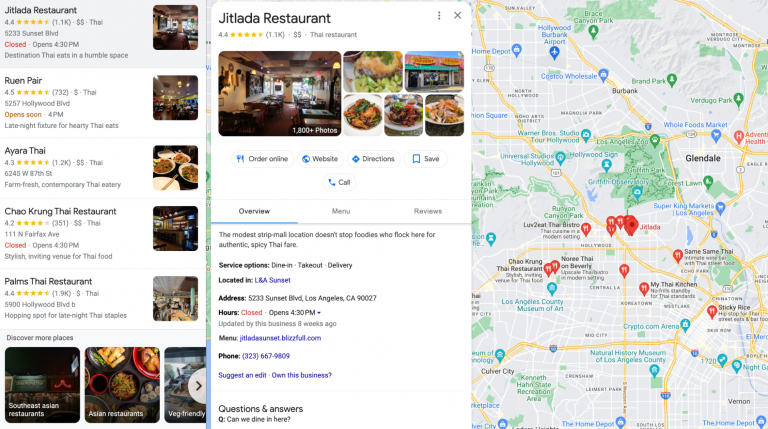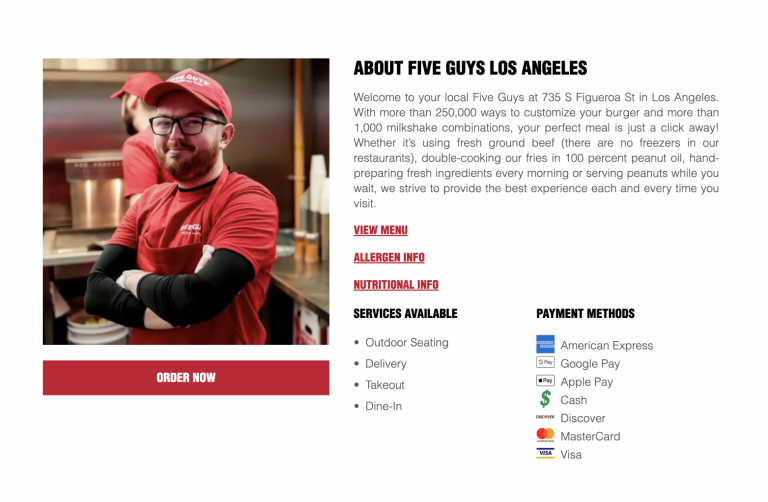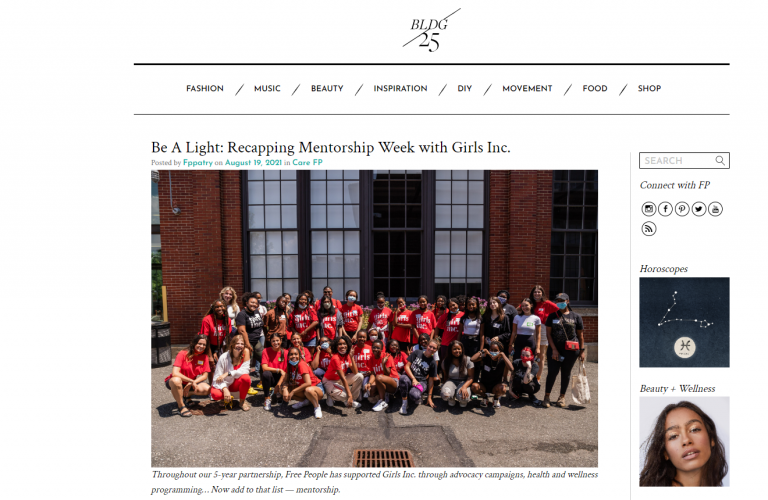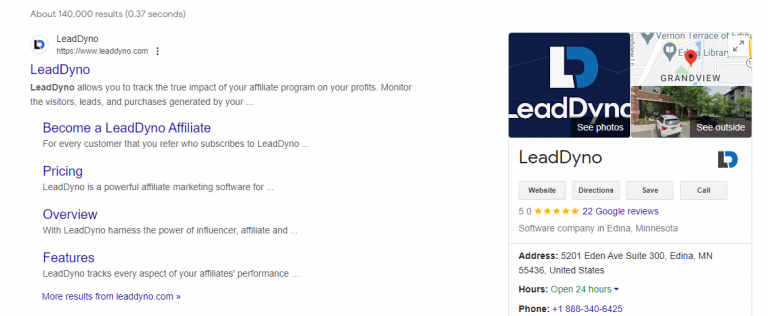Multi-location SEO helps you bring in more new customers across several locations. These expert tips from a top-3% digital marketing agency will ensure your shoppers find you.
You want to attract customers to your local business, but metrics show you’re not making it on their radar.
Sure, your marketing playbook is stacked with a robust Google search engine optimization (SEO) strategy and a content calendar bursting with engaging, value-packed articles (hello, Google rankings) — but still, it feels like those conversions are playing hard to get. What gives?
Looking to capture an extra 30% of mobile searches? That’s the bounty of potential local leads you could reel in with a solid multi-location local SEO strategy.
We chatted with Austin Lewis, a lead strategistat HawkSEMknown for his performance-based strategies and funnels.
His go-to tactic on every marketing checklist? Multi-location SEO. Lewis shares expert tips and insights on how to land more leads and sales with hyper-targeted local SEO.
Let’s get to it.
What is multi-location SEO?
Multi-location SEO helps brands attract organic search traffic and capture new customers from multiple geographical locations. Beyond that, it serves as an excellent recruiting tool to pull in local talent and trim down advertising spend.
Local SEO works for branded keyword searches, like this Pasadena local looking for a nearby PetSmart:

(Image: Google)
See how Google Maps shows every location within the vicinity? And all their other locations will pop up if you press “more locations.”
But searches don’t need to be branded to reflect local SEO. When the same person searches a more generic term, like “pet store,” PetSmart still appears as a local option in the search engine results page (SERPs):

(Image: Google)
Does this mean Google’s algorithms solely rely on local keywords? Far from it. Check out how the local search query above simply says “near me.” This highlights that succeeding in a local SEO campaign involves more than just ticking off keyword checklists to secure local leads.
Local SEO ranking factors and multi-location considerations
Say you’re planning your weekly date night. You might be in the mood for some local Thai cuisine — but what information do the local search results tell you? It’s more than just the restaurant name:

(Image: Google)
We’re presented with reservation links, address details, phone numbers, business hours of operation, reviews, photos, and structured data like a title tag and meta description.
Five multi-location SEO pro tips:
- Google Business Profile and citations for every location
- Local SEO keyword research
- Location-specific web content and webpages
- Local reviews and product ratings: essential even for SaaS and ecommerce businesses
- Backlinks: a bonus for multiple-location businesses
1. Google Business Profile and citations for every location
An up-to-date GBP (formerly Google My Business) is your golden ticket to turn browsers into buyers.
Google gives you tons of customization options through special offers, posts, and photos. It’s essential for brands to keep their business listings accurate to avoid wasted ad spend on local SEO. That means updating basic information, like business names, addresses, and phone numbers (NAP).
Lewis outlines the importance of updating GBPs. “Each location needs its own Google Business Profile,” he explains. “We use it as a source of truth when creating other citations, making it essential to keep NAP data accurate with GBP listings.” He adds that, if a location updates its NAP data, then he only needs to update the GBP listing before updating the changes globally with other citation websites.
Local citations encompass all mentions of your business, from niche and local directories to news releases and brand shoutouts. However, the catch is that brands must regularly audit GPBs and citations to ensure business information is as accurate as possible (a tedious endeavor to pile on to your already-overflowing marketing to-do list).
Lewis has a smart fix for this: tech-powered audits. “You can run basic citation audits through services such as BrightLocal,” he explains. “They will show you any sources that may be listing your NAP data inaccurately.”
Next stop? Location-specific keywords.
2. Local SEO keyword research
Let’s say you have five sales offices for your parenting SaaS platform in New York City, Denver, San Diego, Birmingham, and Asheville. It’s tempting to prioritize keyword bids uniformly across all these locations, but that’s not the most effective strategy.
Why?
Lewis explains that each location has its own set of high-volume targeted keywords, and recognizing this variation is key. Low-volume locations should be considered lastly while high-volume, low-keyword difficulty locations should be considered first, in his eyes.
So, how do you decide which of the five cities mentioned deserves to be the focal point of your local SEO investment? At HawkSEM, we like to kick things off with traditional keyword mapping:
“After we keyword map new location pages, we can sort the options by keyword metrics such as difficulty and volume. This not only shows us which keywords offer the lowest barriers to entry into SERP, but also the highest search volume potential around each keyword.”
In this scenario, it’s about more than numbers. For instance, New York City may boast a higher demographic of parents since it has a larger population, but Birmingham might be home to more high-intent parent searchers.
Moreover, securing a rank for local keywords in the competitive landscape of New York City might demand a heftier budget.
Our expert keyword research skills with the competitive insights drawn from our proprietary tech, ConversionIQ, tell us exactly which city has the highest number of parents aligning with the optimal keyword criteria for market-qualified leads.
3. Location-specific web content and webpages
Typical local SEO requires you to link your contact information page, which includes a Google Map embed, to your GBP. However, things get dicey when you have multiple locations.
A common misstep is consolidating all your business locations into a single contact page on your website. While it might seem practical initially, it undermines your local SEO.
Each individual location needs its own webpage, even if they’re situated within the same city. Take a look at this example from Five Guys:

(Image: Five Guys)
Location photo? Check. Neighborhood? Check. Google Map embed and linked directions? They’ve even added a few internal links for good measure (more on that later).
However, Lewis stresses the importance of having separate local landing pages and unique, localized content on each:
“These pages should all contain unique content. Gone are the days when you can just update the H1 of your location pages. Each page needs to host unique content, however, this presents an excellent opportunity to take advantage of SEO localization while creating some locally compelling copy.”
What does “locally compelling copy” mean, and how do you steer clear of duplicate content? And if your content marketing strategy has already covered industry topics, competitor gaps, and audience interests, where does local content fit in?
“People prefer content that speaks to their local needs and concerns. By investing in local SEO, you can create a more personalized user experience using localization within content, which can be a differentiator.”
More localized content ideas
Did you know you can engage location-specific audiences beyond your particular location’s contact page? Let’s explore some creative strategies for what Lewis describes as locally compelling copy.
Local blog content and events
Let’s say your business participated in a local community charity event. You can engage the target audience in that particular city by creating a blog post about your involvement in the event. Here’s an inspiring example from Free People and their participation in a local Philly event:

(Image: Free People BLDG 25)
Social media content linking to your webpage
Next time your biz makes an appearance at a local event, snap a few Instagram shots and post them. Use your caption to encourage your followers to check out the “link in bio” for the full story on your blog. This generates more traffic to localized content and beefs up your rankings.
Other ways to engage local audiences on social media? Post polls, quizzes, and questions about location-specific products.
Service landing pages
Imagine you run a chain of comfort-food restaurants scattered across the US. Maybe your Louisiana location offers more Cajun-flavored or seafood-inspired dishes, setting it apart from, say, your New Jersey location. This presents a prime opportunity to showcase location-specific offers, complete with enticing photos.
By now, you’ve woven a rich tapestry of SEO-friendly local content to captivate audiences everywhere your business has a presence. But remember, internal links are the cohesive element binding it all together.
Internal links to connect all your local content
Remember the separate link Five Guys used for their Los Angeles location in our earlier example? Don’t forget to maintain solid internal linking across your individual pages for each location and broader website:
If you have a /locations/(i8ndex) page, you should probably be linking each h/locations/[location-name]/ page to the /locations/ page and vice versa. “This can easily be accomplished by adding your locations to the primary navigation,” says Lewis.
Of course, our masterful SEO strategists are here to handle all of these intricacies, so you can focus on other core business priorities.
Speaking of those: how satisfied are your local customers? Hint: check your reviews.
4. Local reviews and product ratings: essential even for SaaS and ecommerce businesses
A stellar review has the power to sway your potential lead’s decision in your favor. Accumulating multiple positive reviews across different locations? Lewis says that’s your fast track to enhanced local visibility:
“GBP reviews will increase local visibility greatly. In addition, product ratings can be beneficial for earning local product feed placements.”

(Image: Google)
But what about SaaS businesses serving customers worldwide, or ecommerce brands shipping globally? Can you still benefit from local online reviews?
Absolutely. Local leads are completely within reach, as demonstrated by this Minnesota-based affiliate software SaaS company, LeadDyno, with their updated GBP and reviews:

(Image: Google)
Take a page from LeadDyno’s playbook. While they can comfortably offer services solely online, creating a sales office was a serious plus for generating market-qualified leads (MQLs). This rings true even for multiple sales offices, especially in big cities with expansive markets.
Bottom line: Lewis maintains that multi-location SEO remains a priority, even for online-centric businesses:
“Local SEO can still offer value to SaaS and ecommerce, but the strategy needs to be nuanced. The investment in local SEO should align with the company’s target market, business goals, and overall digital marketing strategy.”
For instance, some of our ecommerce platform clients handle wholesale phone orders. We’ve helped them improve local ecommerce leads around their sales offices through adept multi-location SEO. Learn more about our results here.
But what if your GBP is up-to-date, and your customers still aren’t leaving reviews? Focus on what’s manageable on your end:
- Encourage or incentivize local clients to leave GBP reviews
- Install product schema markup on your website’s product pages
Wait — isn’t it tacky to ask for reviews?
The art of review requests
Navigating the delicate balance of requesting reviews can be tricky. There’s always a chance that customers could feel pressured. This takes on a whole new meaning in industries like medicine or law, where ethical considerations come into play.
Businesses in less legally charged fields, like those selling niche products on Shopify, can comfortably ask for reviews.
Still, Lewis advises a discerning approach about which customers you ask:
“I would suggest empowering managers or trusted team members to ask for reviews when they notice a customer is particularly happy with their product/service.”
Facilitate the process for your customers by ensuring they can easily leave a review. Here are some ideas:
- In-store locations: QR codes at the exit enable team members to guide customers to leave instant feedback
- Field services: Keep QR-coded business cards handy to share when seeking reviews during house calls or offsite interactions
Another time-efficient method? Lewis swears by CRM automation, which triggers an automated review request via text or email post-interaction:
“When you trust that your team is delivering as promised, there is no reason to not automatically ask your customers for a review each time you interact with them to do business, and that is what many CRM platforms will do.”
And hey, negative reviews happen. Consider them a learning opportunity to enhance the customer experience. Respond to them with empathy and offer dissatisfied customers a chance for a more personalized, attentive service on their next visit.
5. Backlinks: a bonus for multiple-location businesses
Don’t get us wrong, on-page optimization, quality content, and updated GBP listings are vital for local SEO. But if you’ve got room for dessert (we always do), Lewis recommends squeezing in a backlink strategy, too.
“Backlinks from locally relevant sources can offer the additional ranking signal needed to win a competitive local SEO race.” Keyword local. Industry mentions and features are always a plus, but backlinks from local vendors, clients, and organizations will give your multiple-location SEO strategy that oomph it needs to reign the SERPs.
So, where do you start? Connect with your local network:
“See if there is any type of backlink/mention they can offer in a local context. Oftentimes they will list sponsors and partners publicly, however, don’t forget a contextual deep text backlink offers the most value.”
In other words, a sponsor mention or testimonial is good, but an article feature showcasing your local expertise is even better.
The takeaway
A multi-location SEO strategy with location-specific content gets your biz in front of locals who are ready to click and buy.
Now, we’re calling out all multi-location businesses:this is your time to shine! We challenge you to step up and connect with the diverse target audiences in each of your business’s locations.
But remember, SEO efforts for multiple geographic locations won’t skyrocket your online presence overnight. Even savvy brand marketers need to dedicate serious time and energy to optimize one particular location’s rankings, let alone several.
That’s why every local SEO move needs to be well-coordinated before hitting the go-button. That means high-quality, detailed spreadsheets and real-time monitoring to optimize results. Otherwise? You risk forcing a local angle when there isn’t one, or sacrificing ROI with a diluted brand message.
Here’s the good news: HawkSEM has the multi-location SEO game down to a science.
Our seasoned SEM gurus have spent decades fine-tuning SEO strategies for varied niche clients, generating an impressive average 4.5X ROI.
Ready to capture local leads and transform them into even more ROI for your brand? You know where to find us.